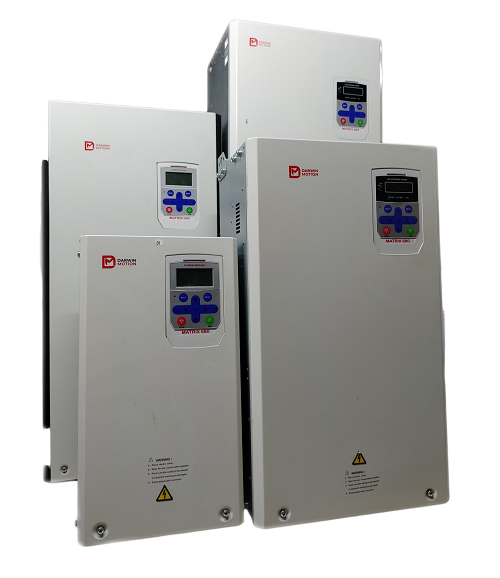Posted on 4th Oct 2023

Darwin Motion Solar pump inverters are an important part of any solar energy system. They take the DC power from the solar panels and convert it to AC power that is used to power the pump. It is important to know the basics about solar pump inverters before you install one on your property.
What is a solar pump inverter?
A solar pump inverter is a device that converts direct current (DC) from a solar panel into alternating current (AC). This AC can then be used to power a pump, which in turn can be used to circulate water or other fluids. Solar pump inverters are a great way to reduce your reliance on traditional energy sources, and they can be a great way to save money on your energy bills.
How does a solar pump inverter work?
Darwin Motion Solar pump inverters - DR Matrix 350 take the DC power output of a photovoltaic panel and convert it to AC power that can be used to power a pump. The operation of a solar pump inverter is based on the principle of pulse width modulation (PWM). In a PWM system, the inverter switches the DC power on and off very rapidly, with the amount of time the power is on determined by the duty cycle. The average power output of the inverter is then determined by the duty cycle multiplied by the power rating of the inverter.
Benefits of using a solar pump inverter
1. Solar pump inverters offer a number of benefits over traditional pump inverters.
2. Solar pump inverters are more efficient, and can save you money on your energy bills.
3. Solar pump inverters are also more environmentally friendly, and can help you reduce your carbon footprint.
4. Solar pump inverters are reliable and long lasting, and can provide you with years of trouble-free service.
5. Solar pump inverters are also easy to install, and can be up to 95% efficient.
4. Types of solar pump inverters
There are three main types of solar pump inverters: central inverters, string inverters, and micro-inverters. Central inverters are the most common type, and are used for larger solar arrays. String inverters are used for smaller arrays, and micro-inverters are used for residential systems.
Central inverters are the most common type of solar pump inverter. They are used for larger solar arrays, and can handle up to 500 kilowatts of solar power. Central inverters are large and expensive, but they are very reliable.
String inverters are used for smaller solar arrays. They are less expensive than central inverters, but are less reliable. String inverters are not as common as central inverters, and are mostly used in residential systems.
Micro-inverters are used for residential systems. They are the smallest and most affordable type of solar pump inverter. Micro-inverters are very reliable, and are a good option for homeowners who want to install a solar system.
How to choose the right solar pump inverter
If you're looking to install a solar pump system, it's important to choose the right solar pump inverter like Darwin Motion - DR Matrix 350. Not all solar pump inverters are created equal, and some are better suited for specific applications than others. Here are a few tips to help you choose the right solar pump inverter for your needs:
1. Decide what type of pump you need.
Not all solar pump inverters are created equal, so you need to decide what type of pump you need. There are three main types of pumps: centrifugal pumps, diaphragm pumps, and positive displacement pumps.
2. Consider the wattage required by your pump.
Solar pump inverters come in a variety of wattages, so you need to make sure the inverter you choose can handle the wattage of your pump.
3. Choose an inverter with the right features.
Inverters come with a variety of features, so you need to make sure you choose one that has the features you need. For example, if you need an inverter with a built-in charger, make sure to choose one that has that feature.
4. Make sure the inverter is compatible with your solar panel system.
Not all solar pump inverters are compatible with all solar panel systems. Make sure to choose an inverter that is compatible with the system you have.
5. Shop around and compare prices.
Not all solar pump inverters are created equal, so it's important to shop around and compare prices before you make a purchase.
6. Installation tips for solar pump inverters
Installing a solar pump inverter may seem like a daunting task, but with the right tips it can be a relatively easy process. Here are a few tips to help make the installation process as smooth as possible:
1. Make sure you have a clear work space before starting the installation. This will make it easier to maneuver the equipment.
2. Follow the manufacturer's instructions closely. This will ensure that the installation is done correctly and that the equipment is properly configured.
3.Test the equipment after installation to make sure it is functioning properly.
4. Have a backup plan in case of equipment failure. This will help minimize the impact of any problems that may occur during the installation process.
If you are considering installing a solar energy system on your property, be sure to educate yourself about solar pump inverters. They are an important part of the system and play a critical role in getting the most out of your solar panels.